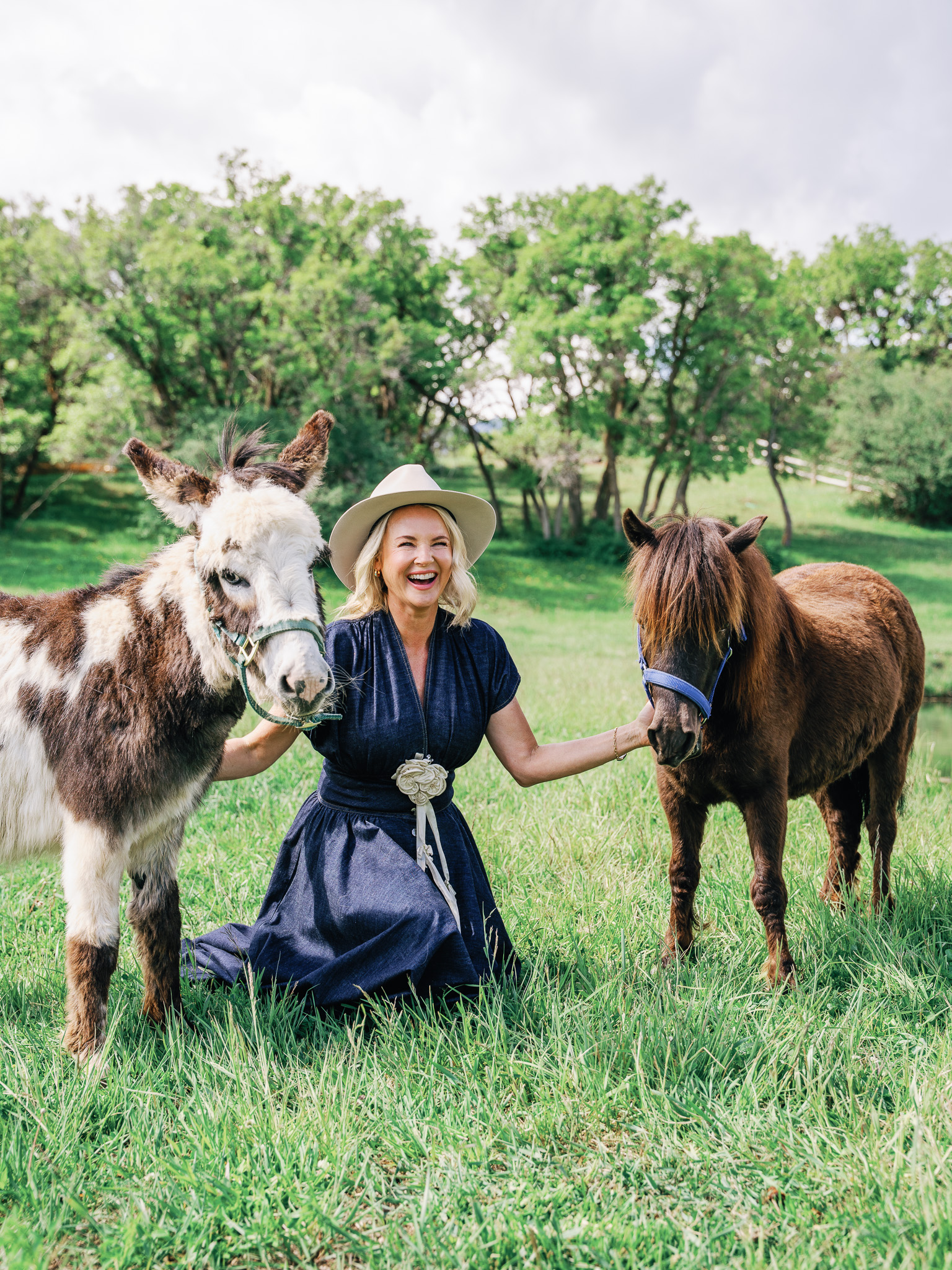
Allison and Dan Rose’s Aspen ranch seems to have been destined for their stewardship. In 2021, the couple celebrated their 25th wedding anniversary with a trip through the mountain town before heading off into Utah and Wyoming. But Aspen, they both admitted, held a particular draw. “Over the next two years, we came back six more times,” recalls Allison. “We were completely enchanted.” Looking for a way to put down roots in Colorado, the pair stumbled upon a working cattle ranch for sale, located on none other than Rose Spur Road in Snowmass. “It felt like a little wink from the universe,” Allison tells CULTURED.
The investor is known for an expansive restaurant portfolio that features some of the West Coast and Hawaii’s most welcoming eateries, including California’s Michelin-starred Birdsong, Protégé, and Selby’s, as well as Hawaii’s trio of farm-to-table destinations, Merriman’s. But her commitments expand far beyond the culinary world. With her husband, an Amazon and Facebook veteran and current chairman of tech fund Coatue Ventures, Allison first purchased a ranch along the slopes of Mauna Kea in Hawaii before expanding their agricultural interests to the Roaring Fork Valley. In the Bay, she maintains her local ties with a seat on the board of San Francisco’s Asian Art Museum and has extended that service to the Aspen Art Museum as she delves further into the community.
Below, she gives CULTURED a tour of the animals and artwork that fill the Rose Spur Road ranch as they continue to build their home on the storied grounds.
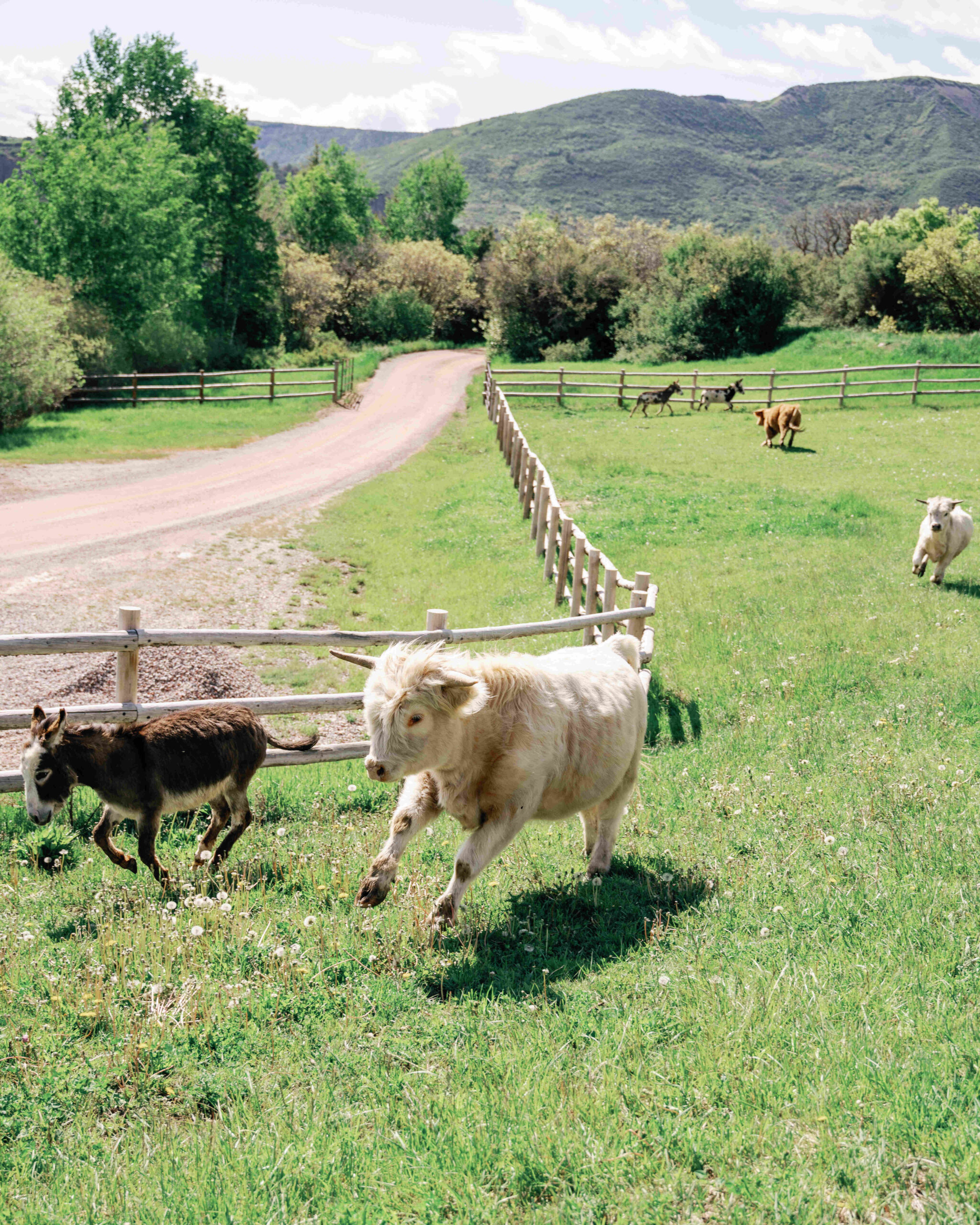
Describe the ranch. What was your vision, and how has it evolved?
My husband teases me that once the kids left home, I started replacing them with animals. On our ranch in Hawaii, I’ve slowly built a full menagerie—18 horses, cows, sheep, goats, mini donkeys, chickens that lay pastel eggs, and bees that make the most delicious kiawe honey.
Old Snowmass has been a slower build (partially because we have to be a little more mindful of predators—yes, wolves). But it’s every bit as magical. We’ve restored a beautiful old barn and begun creating our own whimsical herd: six miniature Highland cows, three miniature donkeys, and Pop Tart, our beloved mini horse. I already imagine future grandchildren falling in love with these animals just as I have. We’re now in the early stages of building a greenhouse, and I hope to begin raising cattle in the future. There’s something deeply rewarding about growing food and sharing it with family and neighbors.
Introduce us to some of your animals. What are their names? How would you describe their personalities?
Pop Tart, our mini horse, is pure charm. He’s a perfect gentleman and has everyone wrapped around his hoof. Thea and Teddy are our inseparable Highland cow twins—sweet and always side by side. Oreo is our handsome little stud who we hope will help us grow the herd next year. Then there’s Smokey and The Bandit—our magnificent draft horses who are a dream to ride on the polo field. They have such calm, noble energy.
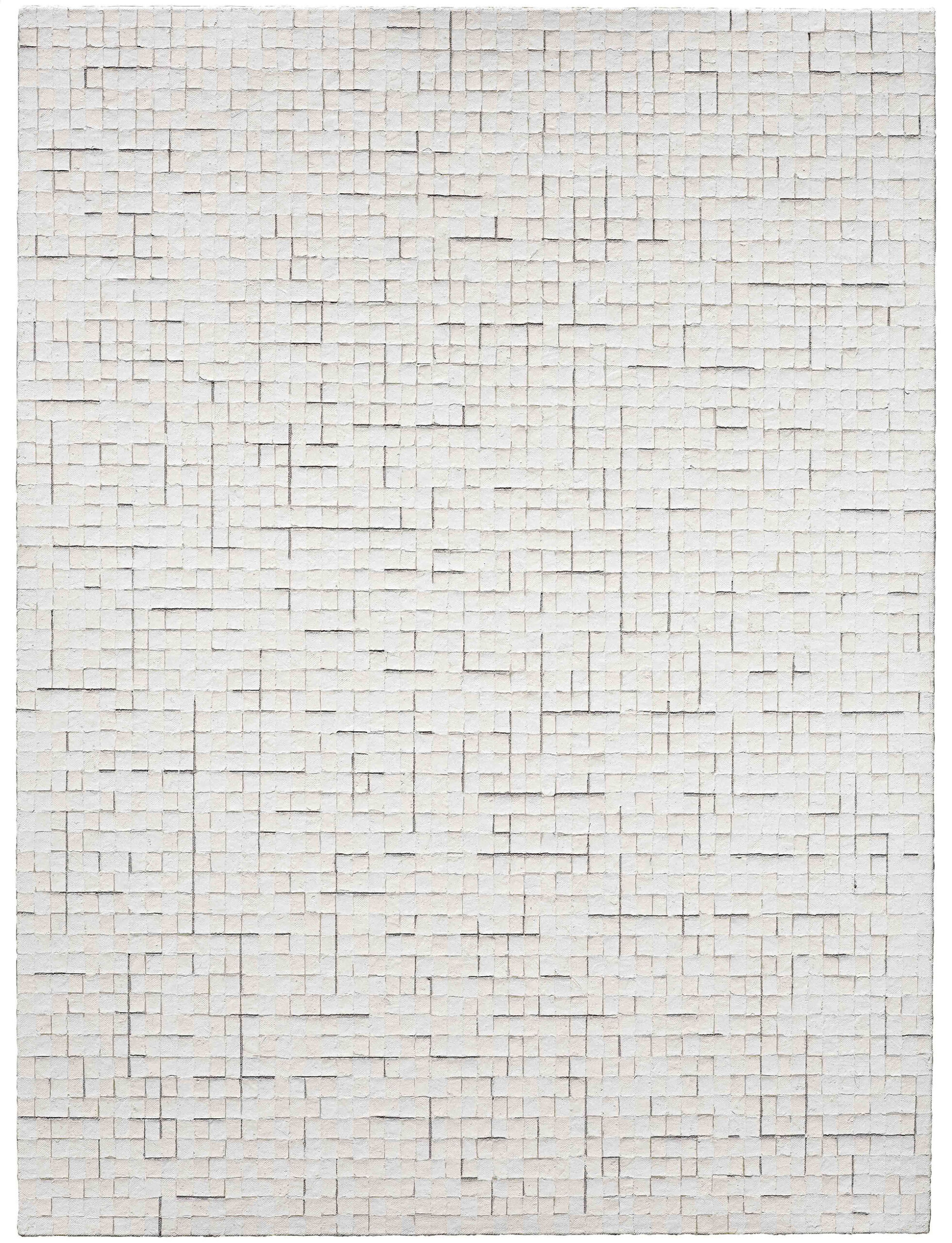
What is the Aspen culinary scene missing?
Aspen is ripe for a three-star Michelin restaurant. I truly believe it would thrive here.
Best dinner reservation in town? What do we order?
For brunch, I love the Little Nell—their fresh-squeezed mimosas and huevos rancheros are a perfect start to the day. For lunch, I often head to the Aspen Art Museum rooftop for the kale crunch salad at Swedish Hill Cafe—it’s become my go-to. And for dinner, the steak frites at Parc Aspen (especially in the bar) are a quiet gem. Don’t miss the railroad fries!
What does a typical Aspen day look like for you? How does raising animals shape that?
My days in Aspen begin with a peaceful walk on the ranch alongside our two white Labradors and a quick check-in on the minis—there’s always a small moment of joy waiting out there. From there, I often head into town for lunch and to see what’s new at the Aspen Art Museum, where I’m proud to serve as a board member. That rhythm—moving from the quiet of the land to the vibrancy of culture—is one of the things I cherish most about life here.
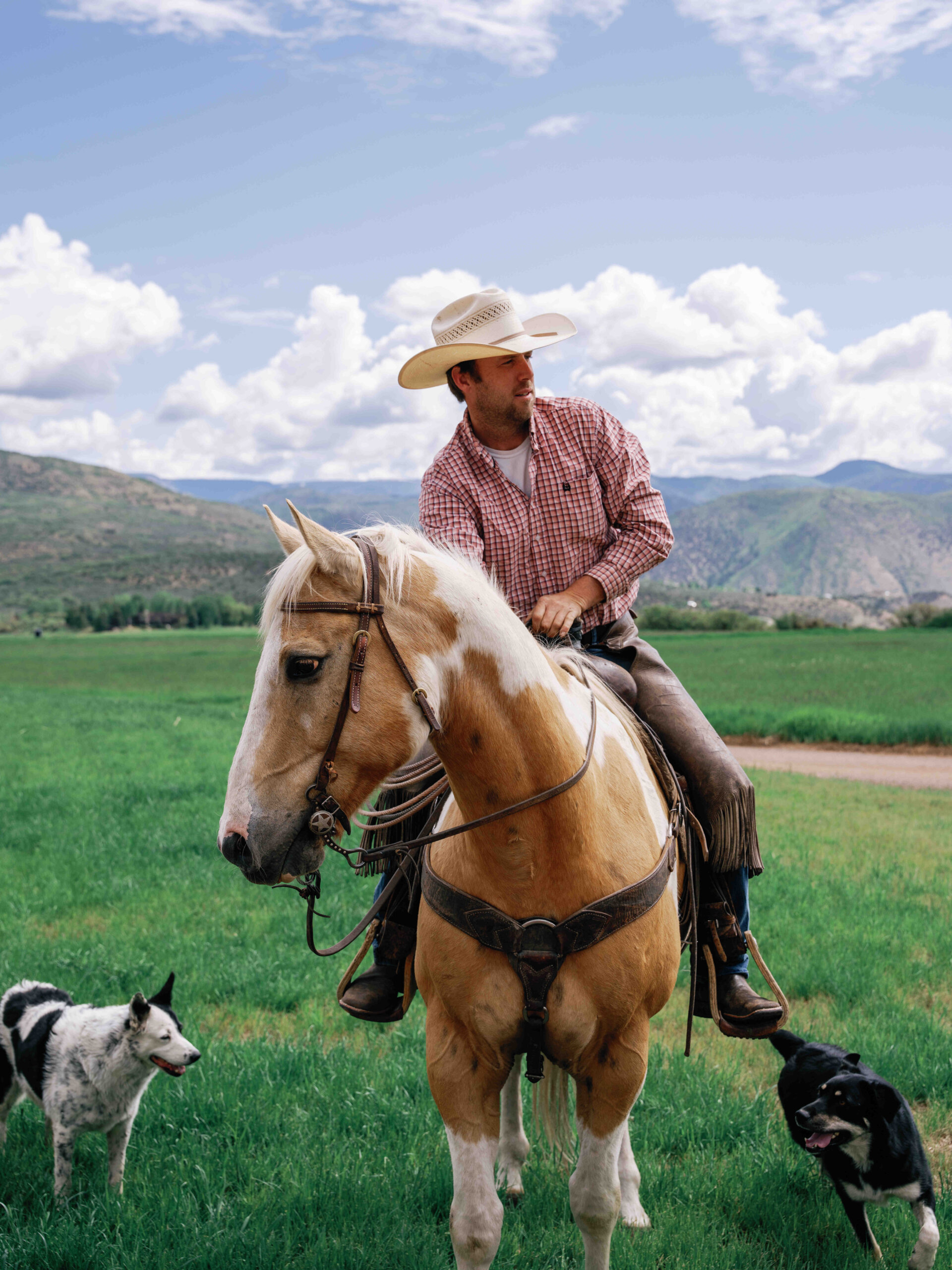
What was your biggest influence in fostering your passion for art?
When my husband and I were designing our first home in Palo Alto, we turned to our dear friend George Roberts for advice on starting an art collection. At the time, our walls were mostly filled with family photos. George introduced us to Mary Zlot of Zlot Buell, and that introduction truly changed our lives. Mary encouraged us to slow down and immerse ourselves in experiencing art firsthand. She taught us the value of building “eye miles”—training our eyes by seeing as much art as possible—before making significant purchases. Over the past decade, our tastes and our collection have grown immensely under her thoughtful guidance.
What is the strangest negotiation you’ve had with an artist or dealer?
One of the most unexpected moments happened with the artist Tara Donovan. We had just acquired one of her incredible “Drawing (Pins)” pieces when we happened to meet her at a party in Silicon Valley. In conversation, I mentioned that my kids and I were moving to Hawaii so they could attend school on the Big Island. She lit up and said she was headed there too—on vacation—and had just rented Mark Zuckerberg’s house. I paused and gently let her know that Mark, whom my husband had worked with at Facebook for over a decade, didn’t actually have a home on the Big Island. After a brief moment of confusion, we realized she had rented the house my husband and I were in the process of buying! It was a surreal, hilarious twist of fate—and one of the most memorable “negotiations” I’ve ever stumbled into.
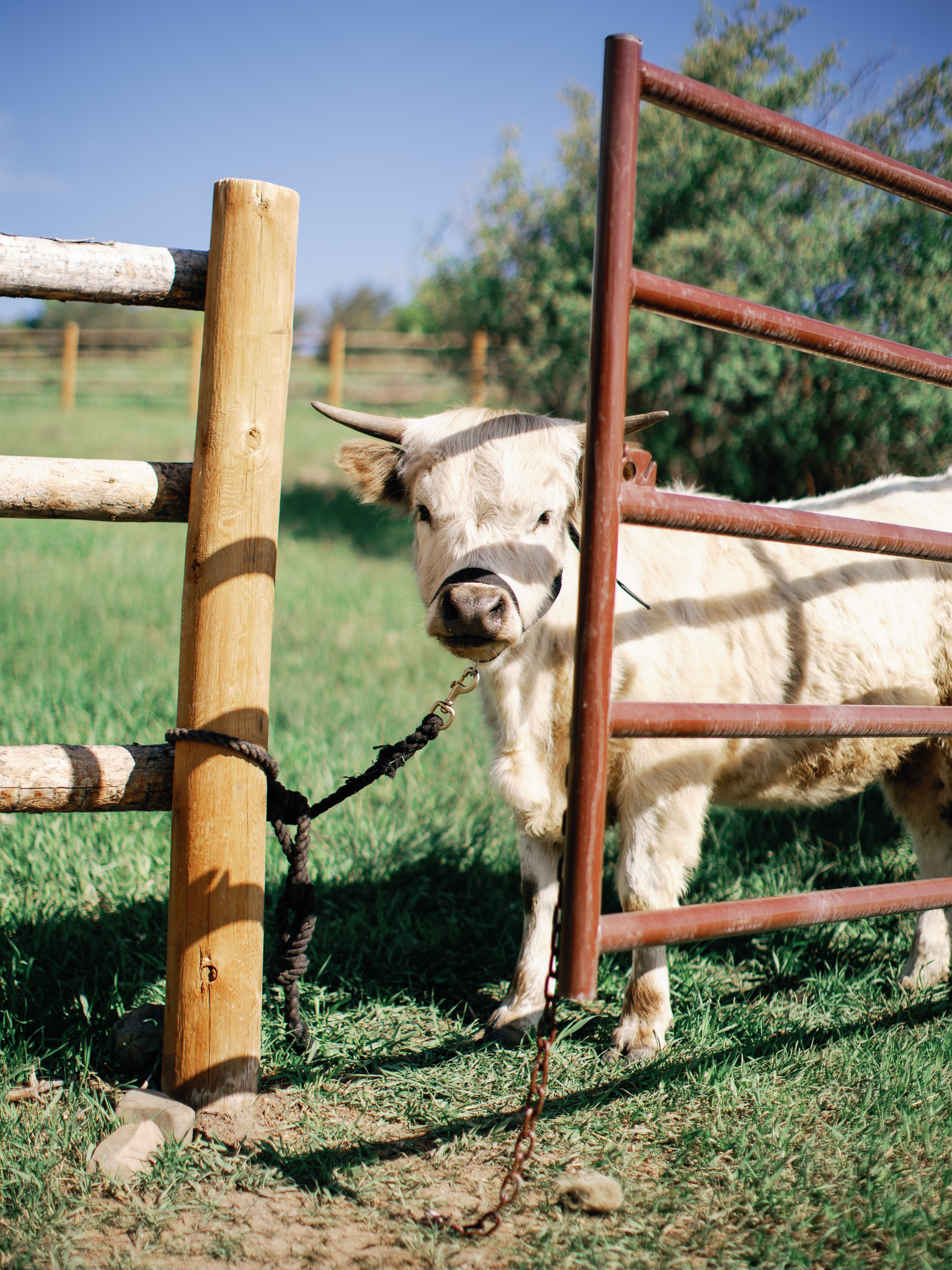
What piece of advice would you give someone who wants to get into collecting?
Start by buying what you truly love. When I began collecting with the guidance of Mary Zlot, she introduced me to some bold, conceptual work in New York—art that challenged me in ways I wasn’t quite ready for. Instead, I found myself naturally drawn to pieces that evoked a sense of calm and joy. I wanted our home to be a place of serenity, not just for me, but for my family and friends. Once our home in Palo Alto was fully curated, my dear friend Akiko Yamazaki came to visit. Walking through the space, she looked around and said, “Allison, I didn’t realize you collected Asian art!” I hadn’t either—until that moment. But there it was: works by [Hiroshi] Sugimoto, [Lee] Ufan, Zhang [Huan], [Kishio] Suga, Chung Sang-Hwa, and other contemporary Asian artists. I realized I had been instinctively drawn to a particular visual language that embodied the stillness I craved.
That visit led to an unexpected and deeply meaningful chapter—Akiko invited me to join the board of the Asian Art Museum in San Francisco, where I served for three years and helped support the creation of their new contemporary wing. It all began with simply trusting my eye and following the art that moved me.
Every collector makes a rookie mistake. What was yours?
Early on, I fell in love with a video work by Christian Marclay titled Straws—it’s smart, compelling, and beautifully executed. But I quickly realized that video art can be tricky to live with, especially in a home designed to feel quiet and serene. To this day, Straws has never been installed.
I’ve always believed that art should be lived with, not stored away. That’s something I deeply admire about the Aspen Art Museum—it’s a non-collecting institution that offers artists and audiences the chance to experience work in the present moment, without the pressure of permanence. Maybe Straws is still waiting for its perfect temporary home.
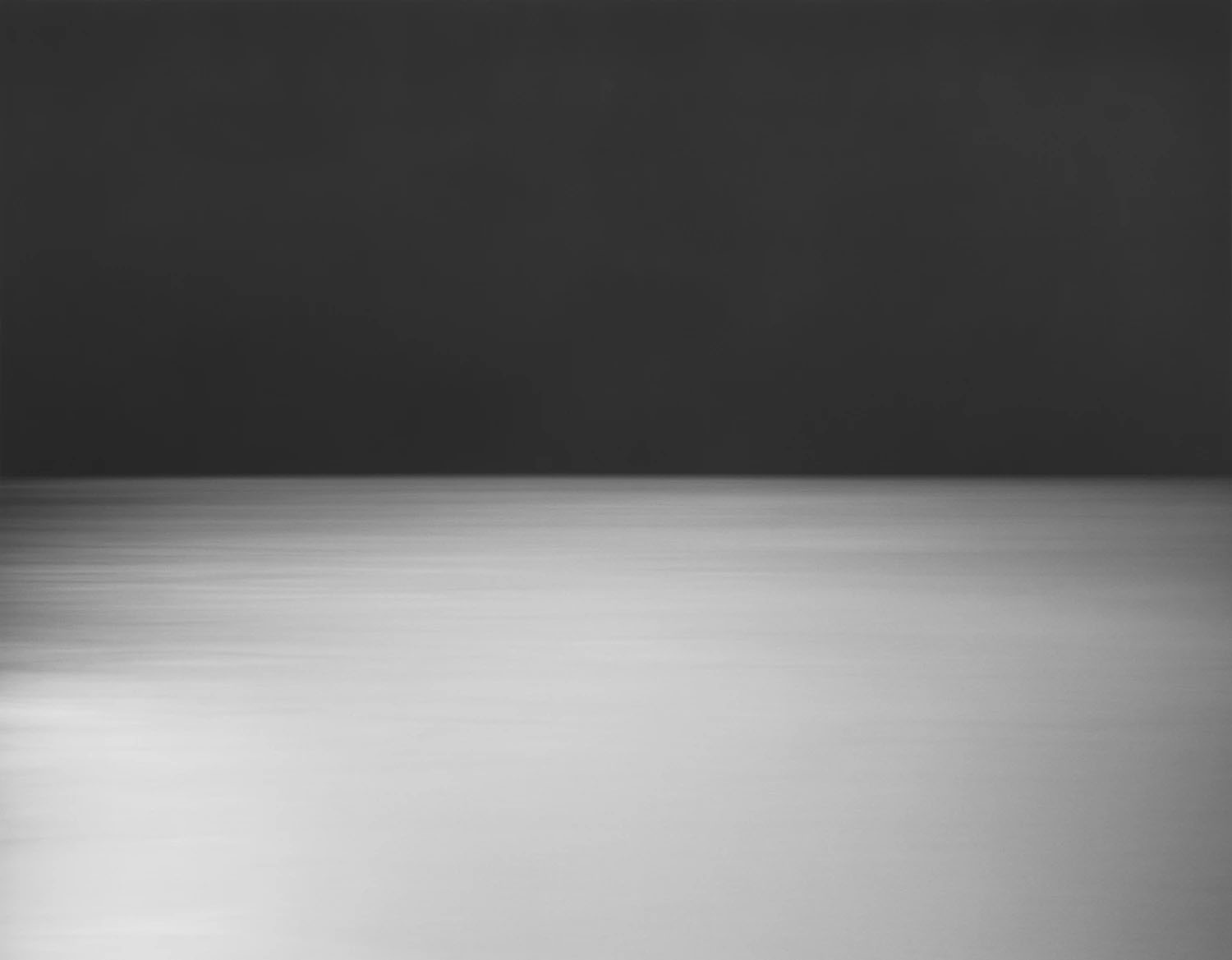
Do you collect cookbooks as well? If so, do you have any favorites?
I’ve built an incredible collection of cookbooks over the years—each one cherished and well-loved. My obsession began when I was 12, after my mother brought home Martha Stewart’s Entertaining, the iconic coffee-table cookbook. I read it cover to cover, completely captivated. I had never seen anything like it—the elegance, the scale, the sheer beauty of it all. By my 13th birthday, I was so inspired that I hosted a full three-course dinner, modeled after Martha’s book. I folded napkins into elegant shapes, crafted handmade chocolate centerpieces, and planned every detail to perfection. I was too shy to invite my own friends… so I invited my mother’s friends instead!
Do you see collecting as an extension of skills you’ve honed in your day job, or an escape from them?
For me, collecting feels like an intuitive skill—one that runs parallel to what I love about the restaurant world. Both are rooted in a deep appreciation for beauty, composition, and experience. Just like plating a dish or designing a dining room, collecting art is about balance, emotion, and instinct. It’s not so much an escape from my work as it is a way to channel that same creative energy through a different lens.
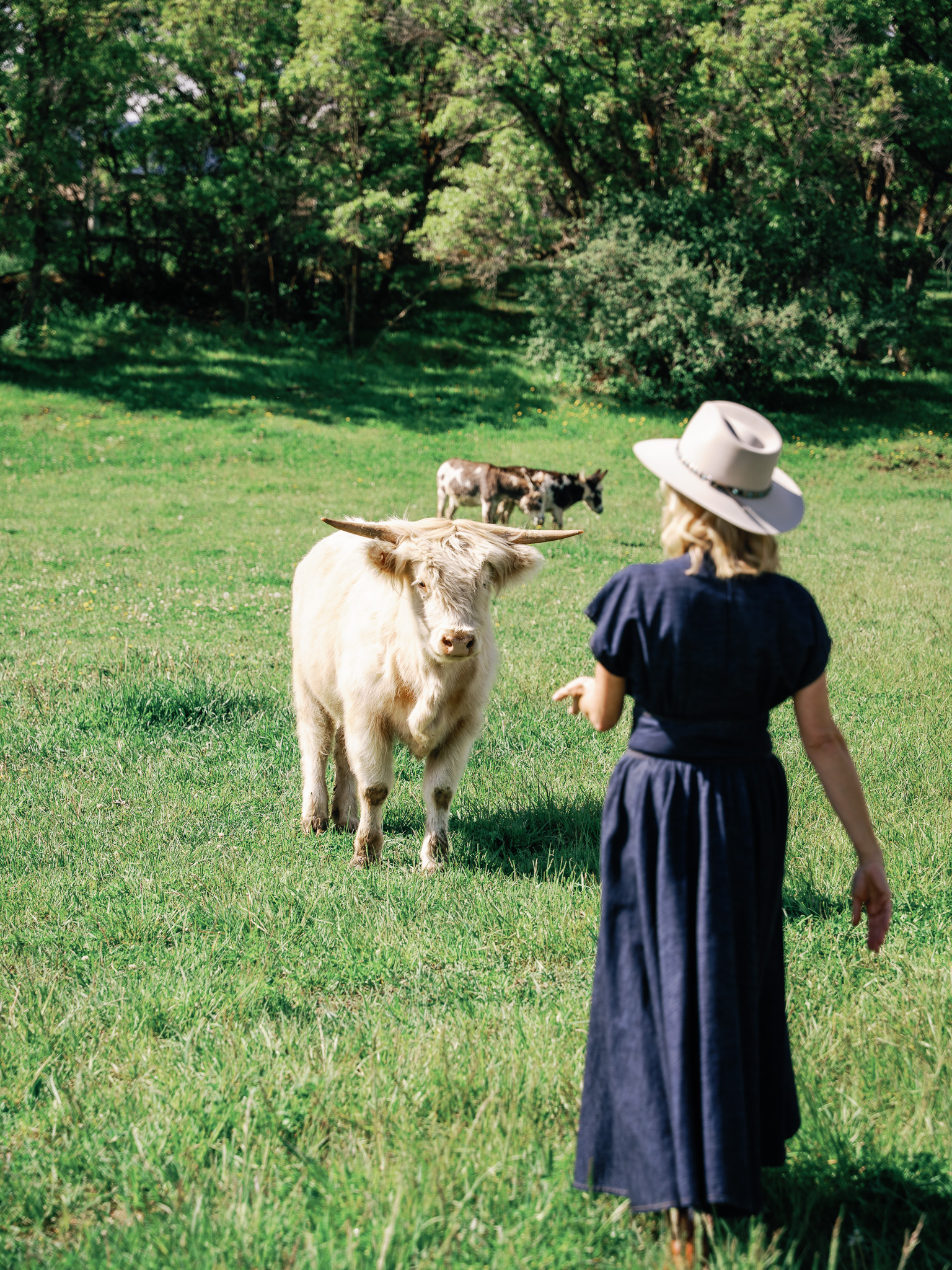
What piece of advice would you give someone who wants to get into collecting?
Only buy what you truly love. My husband and I have a little game we play whenever we’re exploring new art together. We’ll walk through a gallery or collection without saying a word to each other, simply taking it all in. Then, at the end, we each reveal our top three favorite pieces. Amazingly, we almost always choose the same ones.
Which artist are you currently most excited about and why?
I’m currently obsessed with Takashi Murakami’s new Hiroshige-inspired series at Gagosian. It’s a total visual rush—he brilliantly fuses traditional Edo-period prints with his iconic pop aesthetic in bold, glitter-drenched canvases. What excites me most is how he bridges past and present so seamlessly. It’s fresh, playful, and deeply intelligent—everything I love about contemporary art at its best.
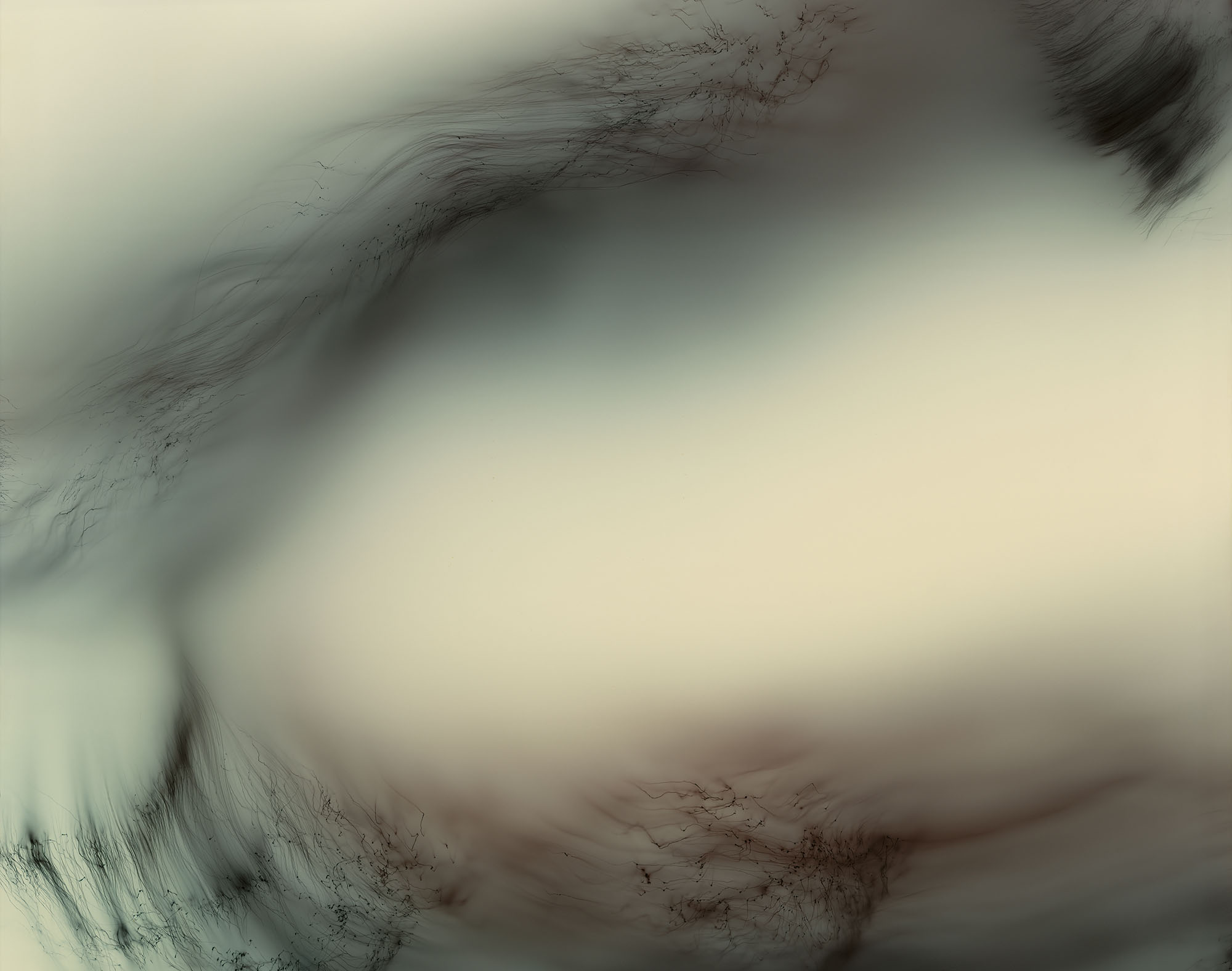
Which work in your home provokes the most conversation from visitors?
The “Freischwimmer” by Wolfgang Tillmans in our Aspen home always sparks the most discussion. It’s one of the most provocative pieces we own, precisely because it blurs the line between photography and painting. At first glance, it looks like a dreamy, abstract wave—but it’s actually a photograph created without a camera. It challenges how we define both image and meaning, inviting deep contemplation without offering a clear narrative. Visitors are often mesmerized.

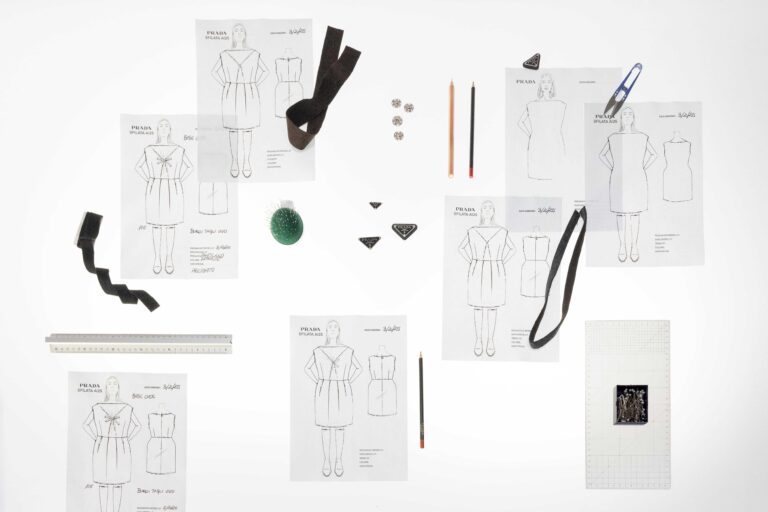

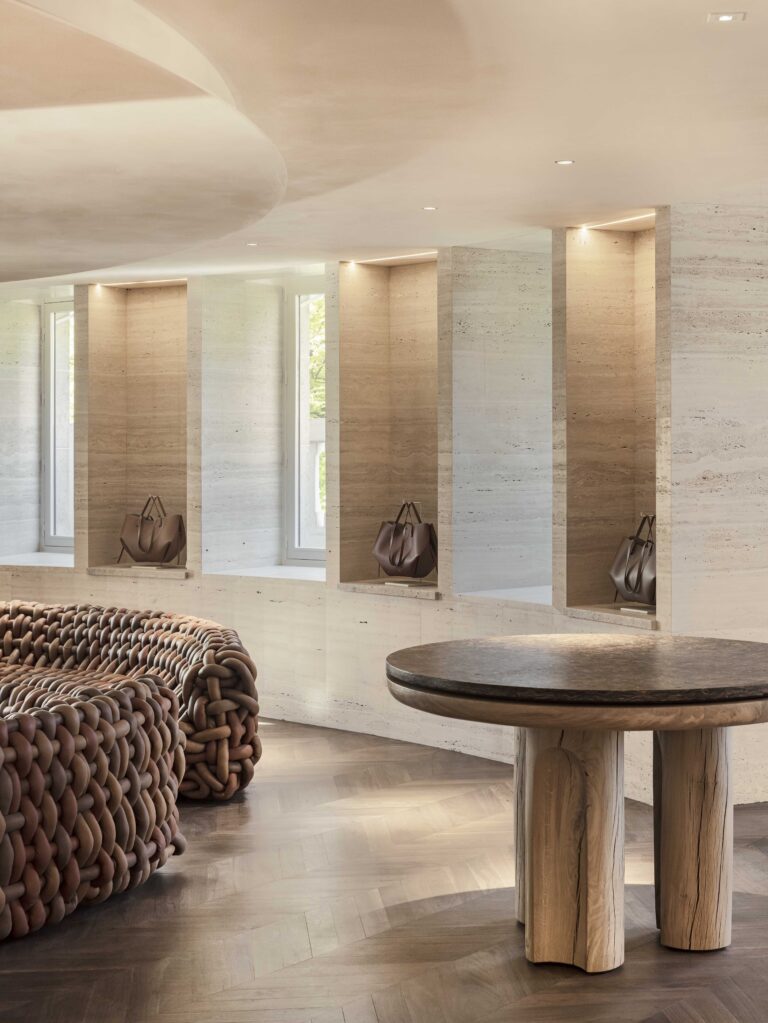
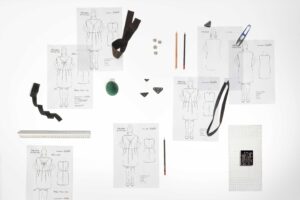

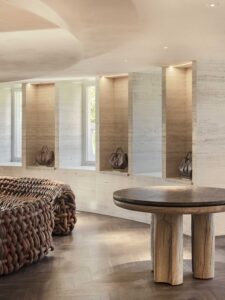



 in your life?
in your life?

